This blue-green newcomer to the gem world is making a splash with its natural beauty.
In late 2012, gem dealer and explorer Yianni Melas was about to abandon his search for diamonds in an undisclosed African country when he discovered a different mineral that looked like nothing he had ever seen.
Melas, known by the nickname “Indiani Yianni,” sent samples of his find to a Swiss gem lab, which misidentified it as chrysoprase. But eventually, the Gemological Institute of America (GIA) confirmed it was a blue-green chalcedony quartz that no one had encountered before. He named it aquaprase — “aqua” for the blue sea, and “prase” for the green color.
“In 30 years, I have discovered countless new deposits of known gems like rubies and sapphires,” says Melas, who has traveled the world for decades in search of rare stones, particularly in Africa. “But never a new gem variety. What a personal high that was!”
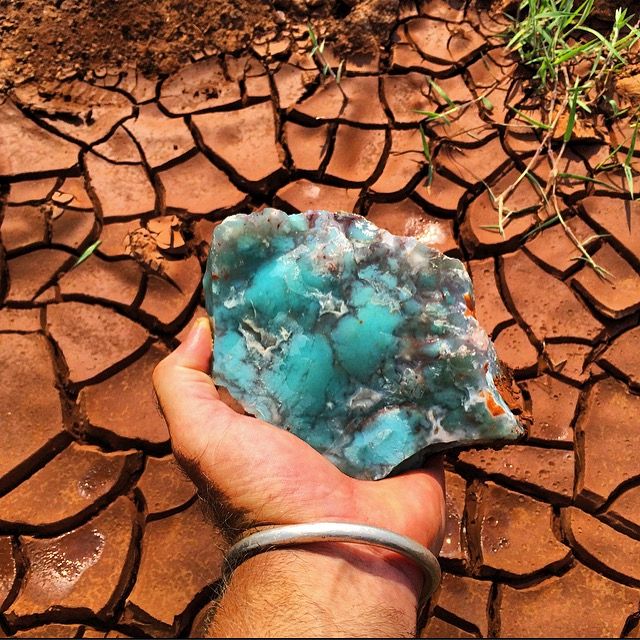
Love at first sight
Aquaprase is now mined by a local company in the country where Melas found it, with 40% royalties going to the government there (the country’s name is being kept confidential to prevent other parties from overrunning the area). The company sells all production to the major investor in the project, Jaipur emerald dealer Avant Chordia, who cuts and distributes the gem.
“Yianni asked me to be part of this story even before the stone was identified,” says Chordia. “His passion was infectious, and I loved the uniqueness of the gemstone and the wide variety of material.”
San Francisco-based jewelry designer Sam Woehrmann is equally enthusiastic about aquaprase, which he first encountered when he met Melas at the 2016 Tucson Gem Show. “I bought two pieces, and have been hooked ever since,” he says. “I knew I wanted to use more of it in my designs.”
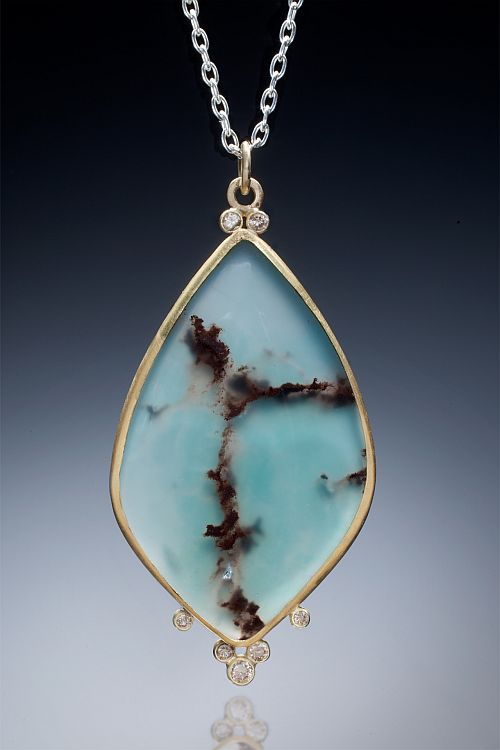
Mesmerizing patterns
Chordia describes aquaprase as having “turquoise blue clouds surrounded by clear areas, as well as Paraiba [tourmaline-like] colors that are more translucent and clear. But the real beauty lies in the matrix” — the patterns throughout the gem.
Woehrmann says he was attracted by the uniform color of the high-quality gem material, but he, too, cites the appeal of the matrix, “which has lovely patterns and color contrasts that make each one unique. The hardness of it was also very appealing to me. It can have that Peruvian opal color with the hardness and toughness of chalcedony quartz.”
People of all ages are intrigued by the stone’s back story, according to Woehrmann. Chordia says millennials in particular are “going crazy” over the tale of its discovery, “especially since it is totally natural, organic and non-treated.”
The going price for aquaprase ranges from $1 per carat for matrix-heavy material to $100 for gem qualities with clear color. The matrix is being cut to maximize the patterns rather than the yield — often butterfly-style for earrings.
“My designs tend to be a bit more modern, but I feel like it can be used in a more classic look as well,” says Woehrmann. Geographically, he finds the gem is most popular in coastal locations near water, including the Great Lakes.
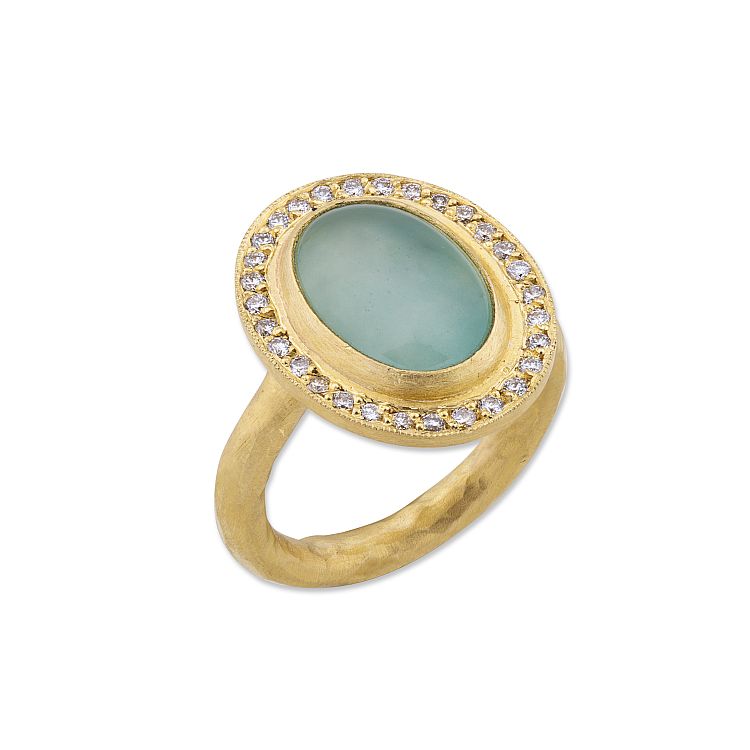
Commercial success
Jewelry brand Le Vian started working with aquaprase a few years ago. It has since launched half a dozen collections using the gem, with special emphasis on what it calls “Peacock Aquaprase.” CEO Eddie LeVian describes it as a “somewhat translucent mix of green and blue, with some brown matrix and white clouds that are reminiscent of waves crashing on a rocky shore on a tropical island.” The stone has been a success with his clients, he reports: “Every Le Vian collector seems to gravitate to this gem. In today’s world of mass production and conformity, there is something very genuine about a gemstone that is not treated and is different for every piece.”
Designer Lika Behar, who showed aquaprase pieces in Las Vegas last year for the first time, likewise says it’s a hit with people who appreciate rare gemstones. “Its unique color looks fantastic mounted in yellow or white gold and, like turquoise or pearls, complements every skin tone.”
However, the future use of aquaprase will be dictated by supply. As of now, it is mined in an area of less than 1 square kilometer. “We have only been able to launch it in fewer than 200 of our 5,000 points of distribution,”
says Le Vian.
Melas, who is soon to unveil a jewelry collection incorporating the gem, continues the search for further supply. “Today, the gem business is tough, and the only way to really succeed is to go with a mine-to-market approach,” he says.
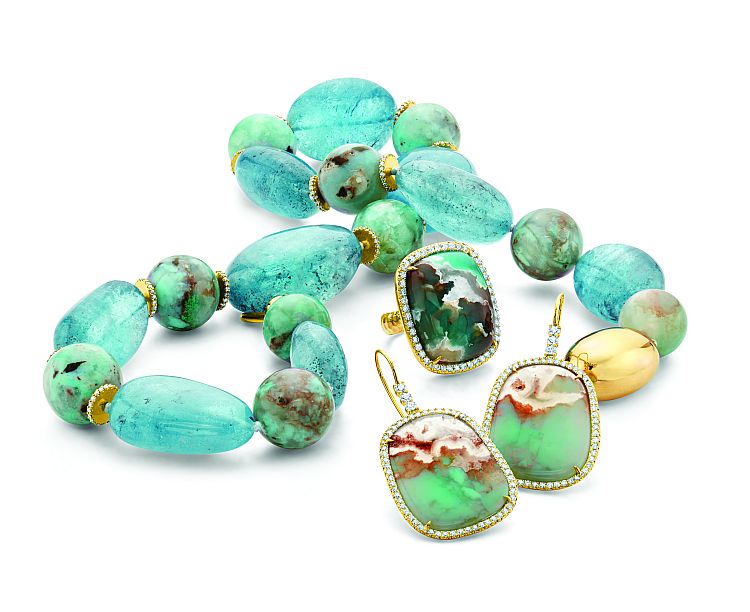
AQUAPRASE: FAST FACTS
*Aquaprase is a chalcedony quartz with a natural color caused by chromium and nickel.
* There are two different types: one that is blue-green and translucent, and one that is more baby blue, but changes color and has clouds.
* The stone’s matrix has dark brown and black inclusions, as well as whitish cloudy ones.
* On the Mohs scale of hardness, the stone is between 7.5 and 7.75.
Main image: Aquaprase found by Yianni Melas.

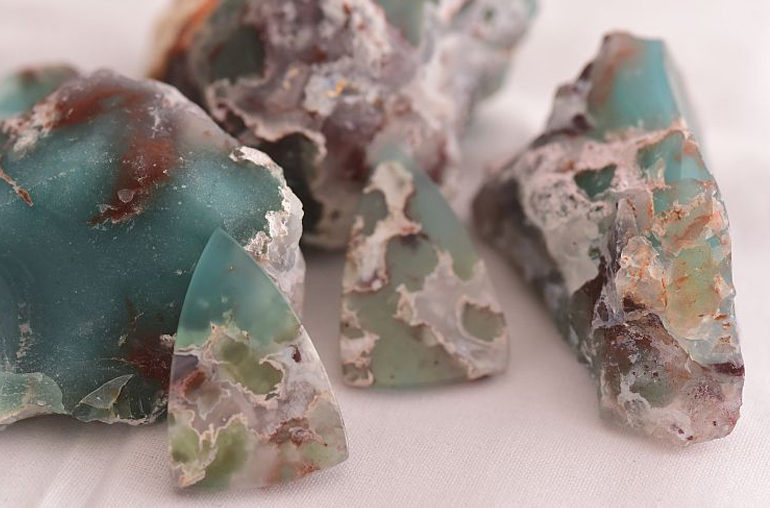
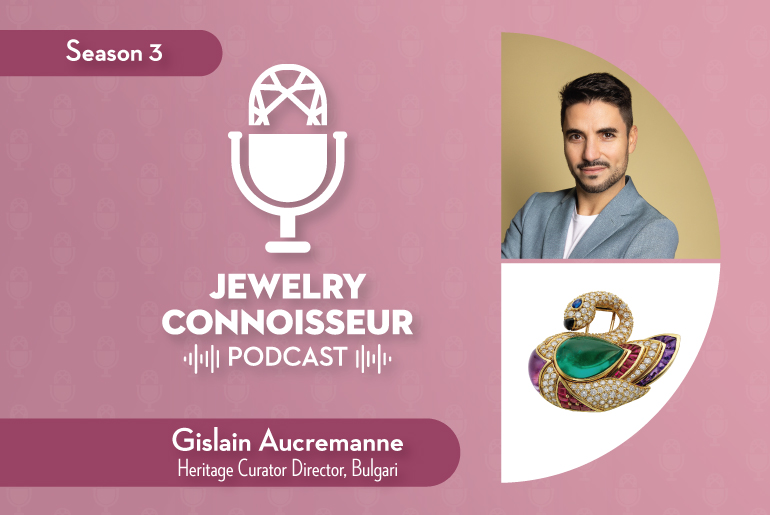
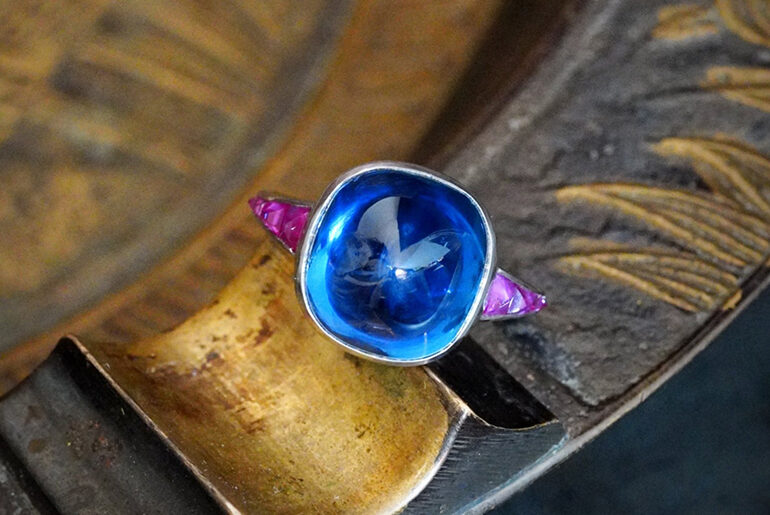
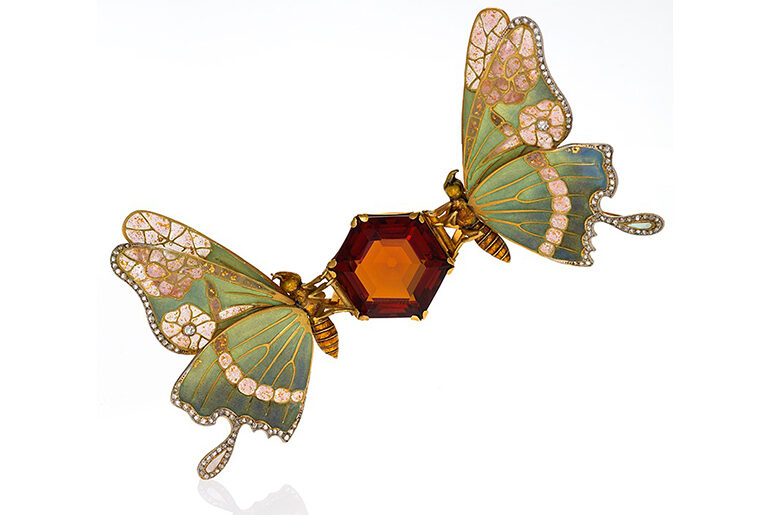
Comments are closed.